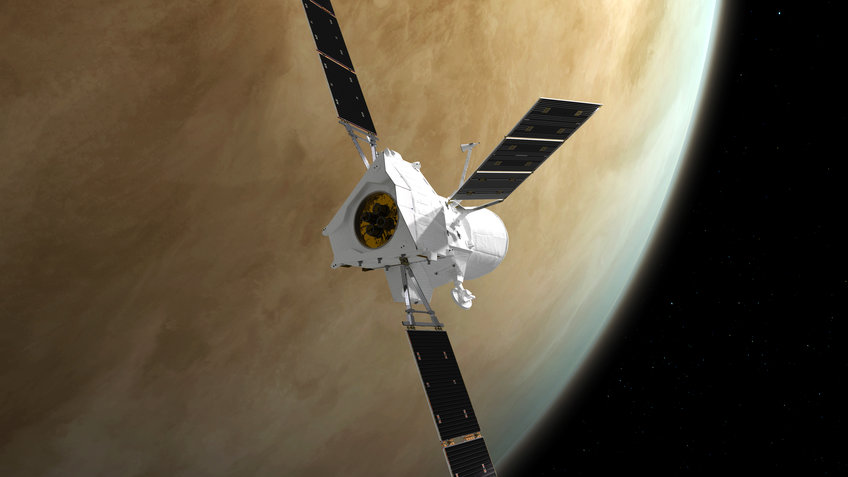Deep below the Black Hills of South Dakota in the Sanford Underground Research Facility, an innovative and uniquely sensitive dark matter detector – the LUX-ZEPLIN (LZ) experiment – has passed a check-out phase of startup operations and delivered its first results. The LZ experiment, which is designed to observe the mysterious and as-yet undetected phenomenon known as dark matter, is led by the Lawrence Berkeley National Lab in conjunction with an international team of 250 scientists and engineers from more than 35 institutions, including Penn State.
“Dark matter is a fundamental part of the universe, but because it does not emit, absorb or scatter light, it cannot be observed in conventional ways,” said Carmen Carmona-Benitez, assistant professor of physics and the LZ principal investigator at Penn State. “I’m thrilled to see this complex detector ready to address the long-standing mystery of what dark matter is made of. The LZ team now has in hand the most ambitious instrument to do so.”
Dark matter’s presence and gravitational pull are fundamental to our understanding of the universe. For example, the presence of dark matter, estimated to be about 85% of the total mass of the universe, shapes the form and movement of galaxies, and it is invoked by researchers to explain what is known about the large-scale structure and expansion of the universe.
Dark matter particles have never actually been detected – but perhaps not for much longer. The countdown may have started with results from LZ’s first 60 live days of testing. The data was collected over a three-and-a-half-month span of initial operations beginning at the end of December. This was a period long enough to confirm that all aspects of the detector were functioning well, according to the researchers.
In a paper posted online July 7 on the experiment’s website and the online preprint archive arXiv.org, LZ researchers report that with results from the initial run, LZ is the world’s most sensitive dark matter detector.
“We plan to collect about 20 times more data in the coming years, so we’re only getting started,” said LZ spokesperson Hugh Lippincott of the University of California Santa Barbara. “There’s a lot of science to do and it’s very exciting.”
An underground detector
A variety of cosmic particles collide with the Earth on a regular basis, and LZ is designed to detect theorized dark matter particles known as weakly interacting massive particles. The experiment is located about a mile underground to protect it from cosmic radiation at the Earth’s surface that could drown out dark matter signals.
The heart of the LZ dark matter detector is comprised of two nested titanium tanks filled with 10 tons of very pure liquid xenon. When particles collide with xenon atoms, they produce visible scintillation or flashes of light, which are recorded by two arrays of photomultiplier tubes, explained Aaron Manalaysay from the Berkeley Lab who, as LZ physics coordinator, led the collaboration’s efforts to produce these first physics results, including calibration, understanding of the detector response, and sensitivity.
“Considering we just turned it on a few months ago and during COVID restrictions, it is impressive we have such significant results already,” Manalaysay said.
The collisions also will knock electrons off xenon atoms, sending them to drift to the top of the chamber under an applied electric field where they produce another flash permitting spatial event reconstruction.
“The characteristics of the light signals help determine the types of particles interacting in the xenon, allowing us to separate backgrounds and potential dark matter events,” said Luiz de Viveiros, assistant professor of physics at Penn State, whose team is responsible for modeling and monitoring background signals in the detector.
A successful start
“Lots of subsystems started to come together as we started taking data for detector commissioning, calibrations and science running,” said David Woodward, assistant research professor of physics at Penn State and the experiment run coordinator. “Turning on a new experiment is challenging, but we have a great LZ team that worked closely together to get us through the early stages of understanding our detector.”
With confirmation that LZ and its systems are operating successfully, Carmona-Benitez said, it is time for full-scale observations to begin in hopes that a dark matter particle will collide with a xenon atom in the LZ detector soon.
LZ is supported by the U.S. Department of Energy’s Office of Science, Office of High Energy Physics, and the National Energy Research Scientific Computing Center, a DOE Office of Science user facility. LZ also is supported by the Science and Technology Facilities Council of the United Kingdom; the Portuguese Foundation for Science and Technology; and the Institute for Basic Science, Korea. More than 35 institutions of higher education and advanced research provided support to LZ. The LZ collaboration acknowledges the assistance of the Sanford Underground Research Facility.








